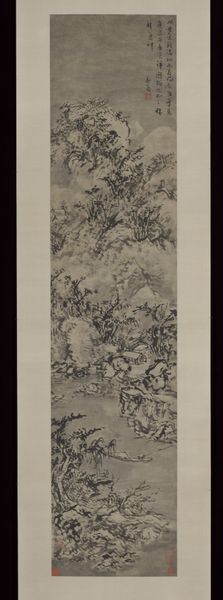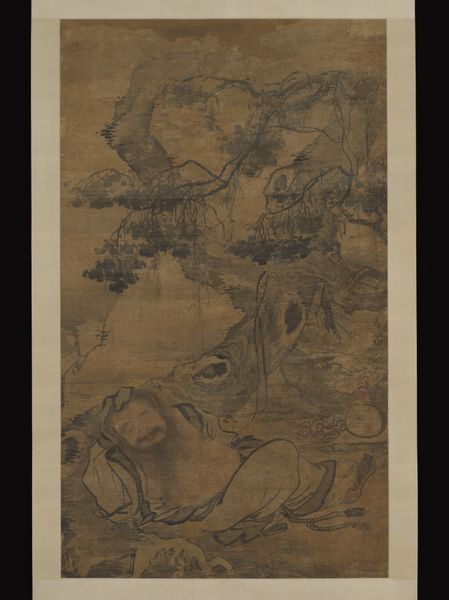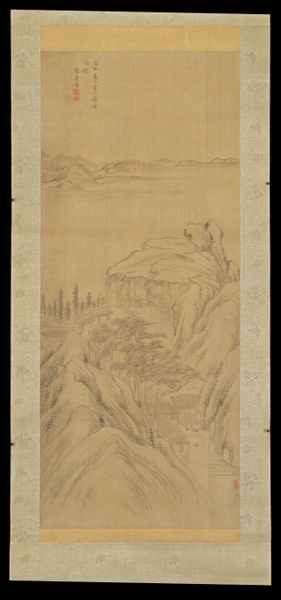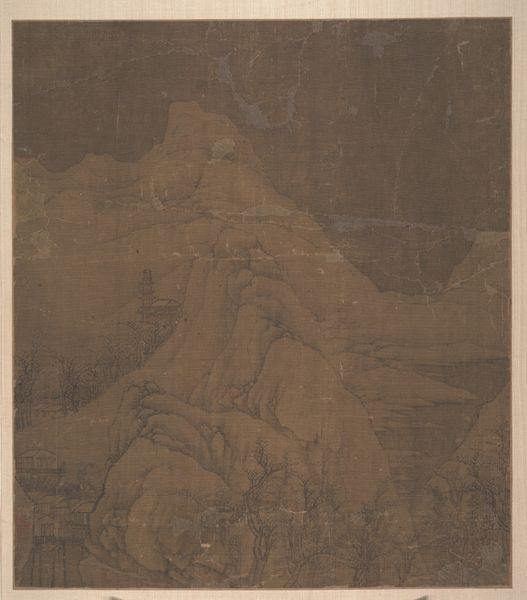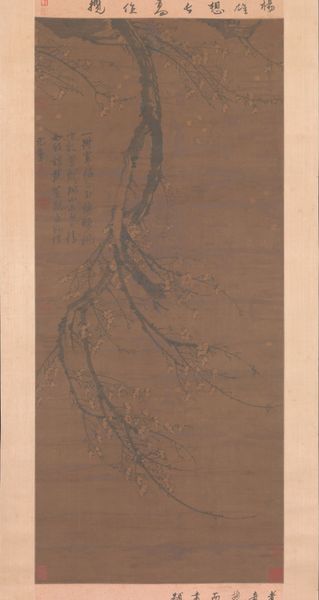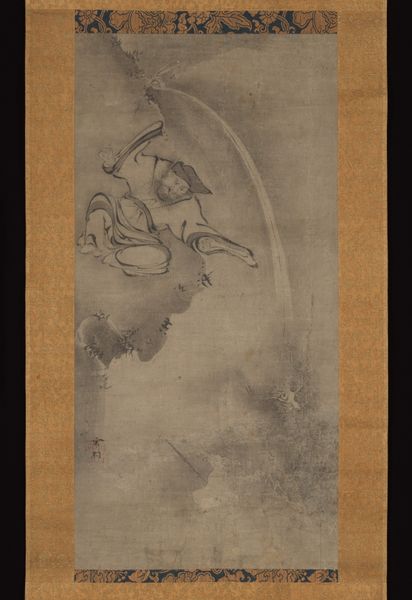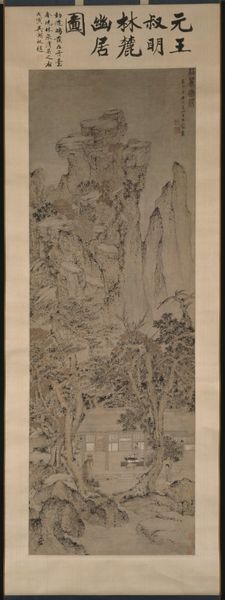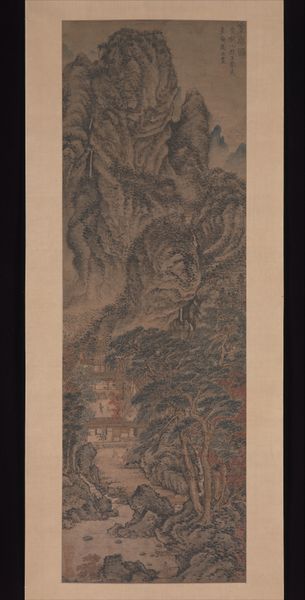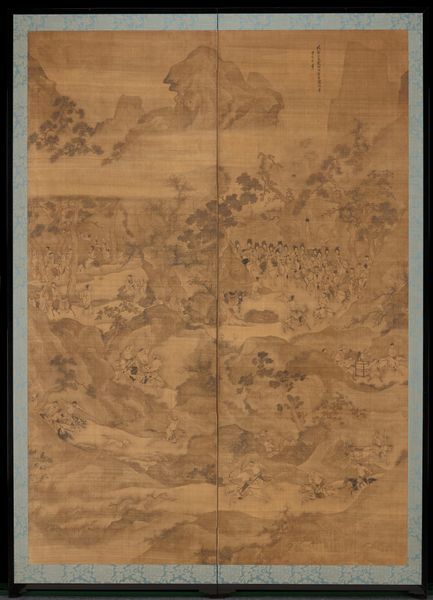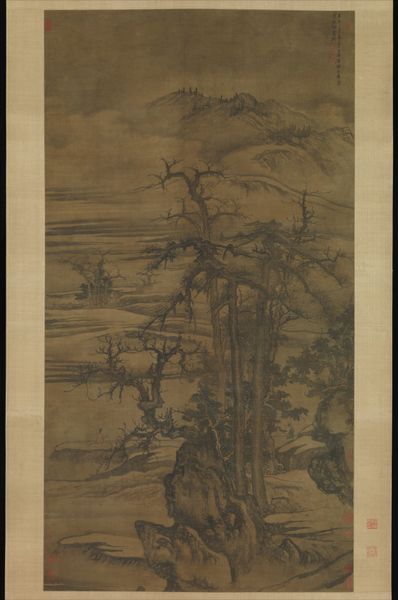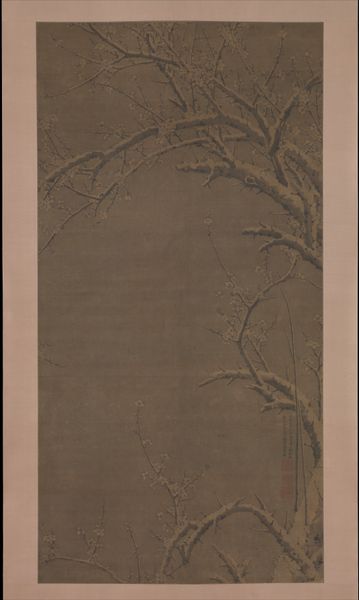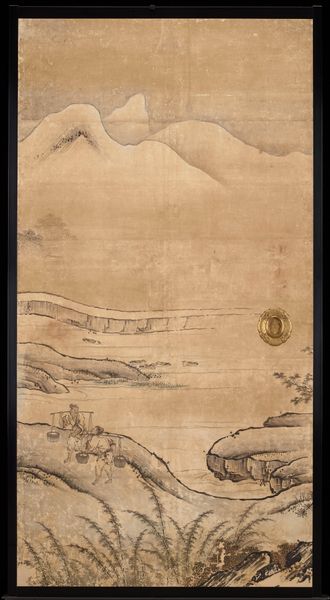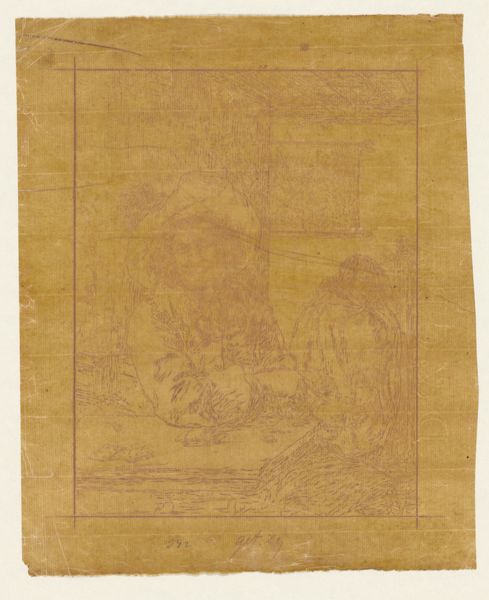
tempera, painting, paper, ink, earthenware
#
earth tone
#
tempera
#
painting
#
asian-art
#
landscape
#
river
#
paper
#
form
#
ink
#
earthenware
#
earthy tone
#
geometric
#
mountain
#
orientalism
#
abstraction
#
china
#
line
#
realism
#
monochrome
Dimensions: Image: 86 3/4 × 43 in. (220.3 × 109.2 cm) Overall with mounting: 11 ft. 1/2 in. × 48 in. (336.6 × 121.9 cm) Overall with knobs: 11 ft. 1/2 in. × 53 in. (336.6 × 134.6 cm)
Copyright: Public Domain
Editor: This is *Riverbank*, an ink and tempera on paper landscape painting attributed to Dong Yuan, dating back to the tenth century. It’s currently held at the Metropolitan Museum of Art. It feels very subdued, almost monochromatic. What visual language do you read in it? Curator: The river, mountains, and trees aren't merely a representation of the external world. What feelings does the monochromatic palette evoke for you, knowing this painting comes from the Southern Tang dynasty? It's a world steeped in literati culture, reflecting not just observation but internal landscapes too. The landscape becomes a vessel for memory, contemplation, and societal ideals. Editor: It does seem very idealized and, you're right, very tied to its time. What symbols stand out to you the most? Curator: Notice the mist shrouding the mountains. Mist, often a symbol of transition or the ephemeral, adds to the emotional atmosphere. Then, the geometric placement of forms such as rocks and trees directs us into a silent conversation within the painting. The placement isn't random; each element carefully leads the viewer's gaze, and in a way, dictates the rhythm of observation, contemplation, understanding of one's cultural and spiritual place. How do those placements strike you? Editor: They almost feel like the landscape is performing for me! It really is an orchestrated visual experience, meant to elicit a specific response. Curator: Precisely. What began as mere representation morphs into profound commentary of cultural values and humanity’s relationship with nature. Looking at *Riverbank*, what recurring elements might a modern viewer find culturally unique? Editor: Perhaps the subtlety and lack of bright colors compared to our more immediate visual culture. It demands patience and reflection. I think I'm starting to see how different our connection to images can be depending on context and cultural memory. Thanks for sharing this with me! Curator: My pleasure! Understanding visual history really is about understanding ourselves, isn't it?
Comments
No comments
Be the first to comment and join the conversation on the ultimate creative platform.

